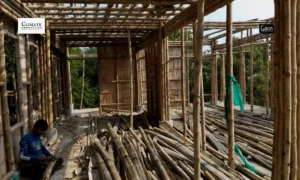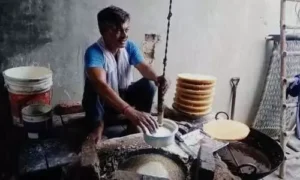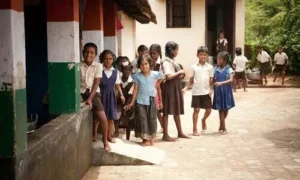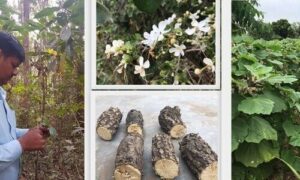The Indian summer had just started knocking at the doors. But Bengaluru was never more alluring with its sweet breeze, gentle sunshine and its flowering trees.
On a February afternoon a couple of years ago, I stood at a small, but beautifully crafted and colourful temple in the dhobi ghat of Malleshwaram, one of the city’s oldest localities. As I walked its lanes and by-lanes dotted with old houses with kolam on their doorsteps and thresholds, I was transported to Malgudi Days of my childhood.
My happy nostalgia was suddenly interrupted by loud voices speaking in Kannada. The voices emerged from a wide hole in the ground — a dugwell (kuan), believed to be over 100 years old.
They must be the one, I told myself. The dhobi ghat in Malleshwaram was not part of my reporting assignment. I had come there on the advice of my friend and guide, S Vishwanath, founder and director of Biome Environmental Solutions. He had told me about how an ancient practice was being revived in Bengaluru to rid the Silicon City of India, of its most pressing problem — water scarcity.
Also Read: As Spring Goes Missing
I peeped down and saw a bunch of water warriors — men from the ‘Bhovi’ (‘Bhavi’ means well in Kannada) or ‘Mannu Vaddar’ (also spelled as Waddar) community of traditional well-diggers.
These well-warriors stood inside the 60-feet deep well, in their undergarments, removing silt and waste from the giant well, which once was the sole source of water for the washerman’s community at the dhobi ghat. But with the increase of borewells and water tankers, open dug wells slowly choked to death.
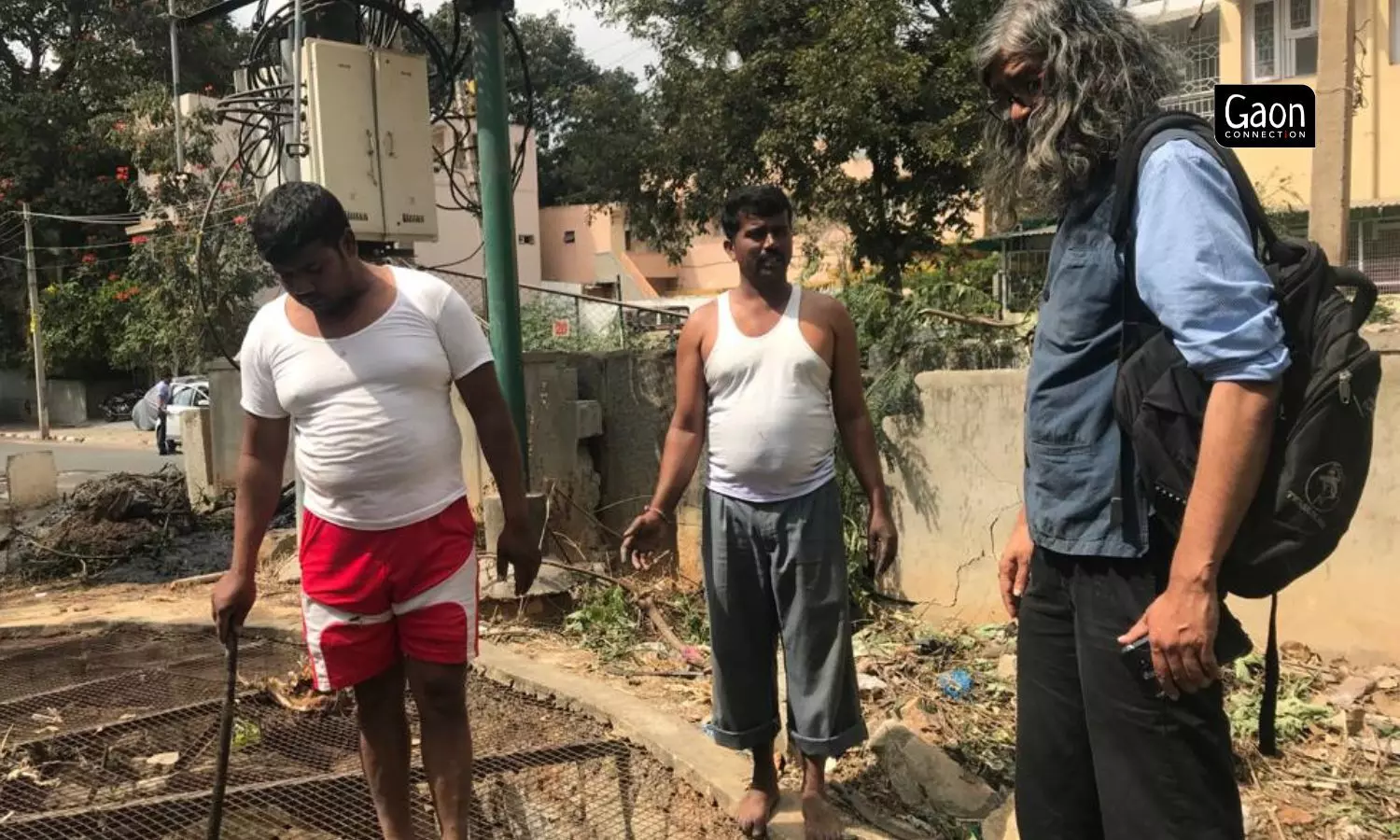
Vishwanath, who was also at the site, explained the role the well diggers community could play in helping solve the growing water crisis in the southern metropolis.
Shankar, the leader of the group, informed me that the group of ten well-diggers would spend all day cleaning the well in order to bring it back to life. They used thick ropes to descend and ascend from the well, buckets and baskets to remove the silt and garbage, and a motor pump to pump out dirty water. Of course, their most important implement was their traditional wisdom about a profession that had come down to them from generations.
The Bhovi men, most of them unlettered and from a Schedule Caste, are helping address Bengaluru’s water crisis, one well at a time. They are an integral part of the ‘Million Wells for Bengaluru’ campaign started by the Biome Environmental Trust. The objective of this mass movement is to increase the groundwater table in the city while providing livelihoods to the community of well diggers.
There are at least 15 villages of the Bhovi community around Bengaluru. Shankar and his fellow diggers hailed from Bhovipalya village, near Sarjapur, on the outskirts of Bengaluru, which had 110 Bhovi families. People of these families who once earned a comfortable living by digging and maintaining dugwells, are now mostly daily wage labourers, often migrating in search of work.
Vishwanath, who was also at the site, explained the role the well diggers community could play in helping solve the growing water crisis in the southern metropolis, and across the Indian landscape that was one dotted with open wells of different sizes, shapes and designs.
These wells were once the main source of drinking water for Bengaluru, Vishwanath said. Even after piped water supply came in, wells continued to do their job. But, the arrival of borewells in the early 1980s spelt the end of the culture of wells. Dugwells, which were integral to our everyday lives, fell to disuse and slowly disappeared, were encroached upon and finally died with the start of indiscriminate groundwater extraction.
As Vishwanath spoke, my mind raced back to several of my reporting assignments in Bihar where dug wells were abandoned and the chapakal (hand pumps) were introduced by the government and international agencies to provide ‘safe’ drinking water.
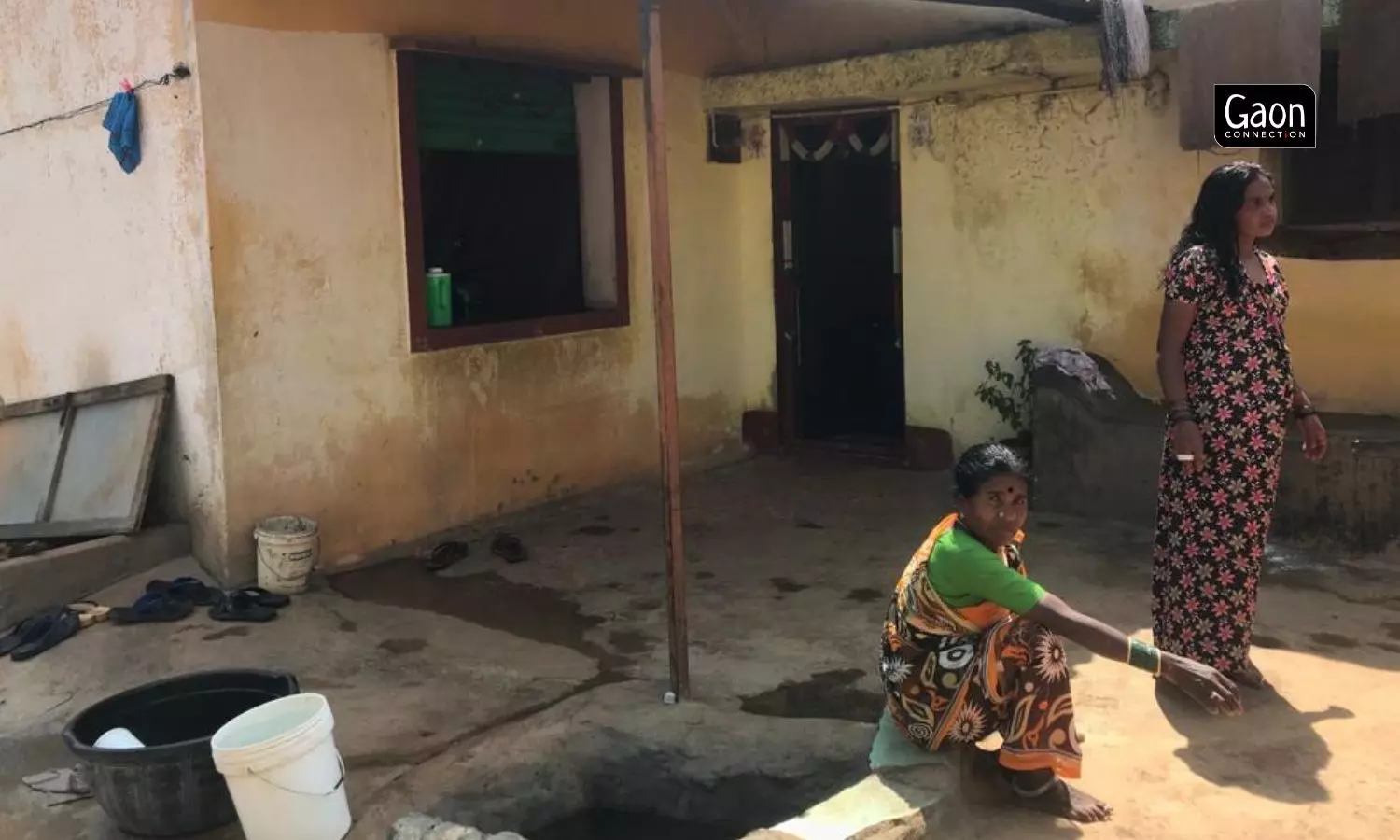
Despite two monsoons every year— the southwest monsoon (June to September), and the northeast monsoon (October to December) — India struggles for water.
The fact that these hand pumps soon became a source for ‘poisoned’ water laced with high arsenic and fluoride, which over the decades have maimed hundreds of thousand and spread cancer in far-flung villages, is another story. Several villages in Bihar are now abandoning hand pumps and reviving their dug wells to escape disability and death. Gaon Connection has been documenting these stories.
Somewhat similar happened at the dhobi ghat in Malleshwaram. According to Shankar, because of water shortage, washermen were forced to buy water from private tankers, or depend on borewells that were fast running dry. So, the washermen association approached the long-forgotten Bhovi community to clean this 100-year-old well and revive it.
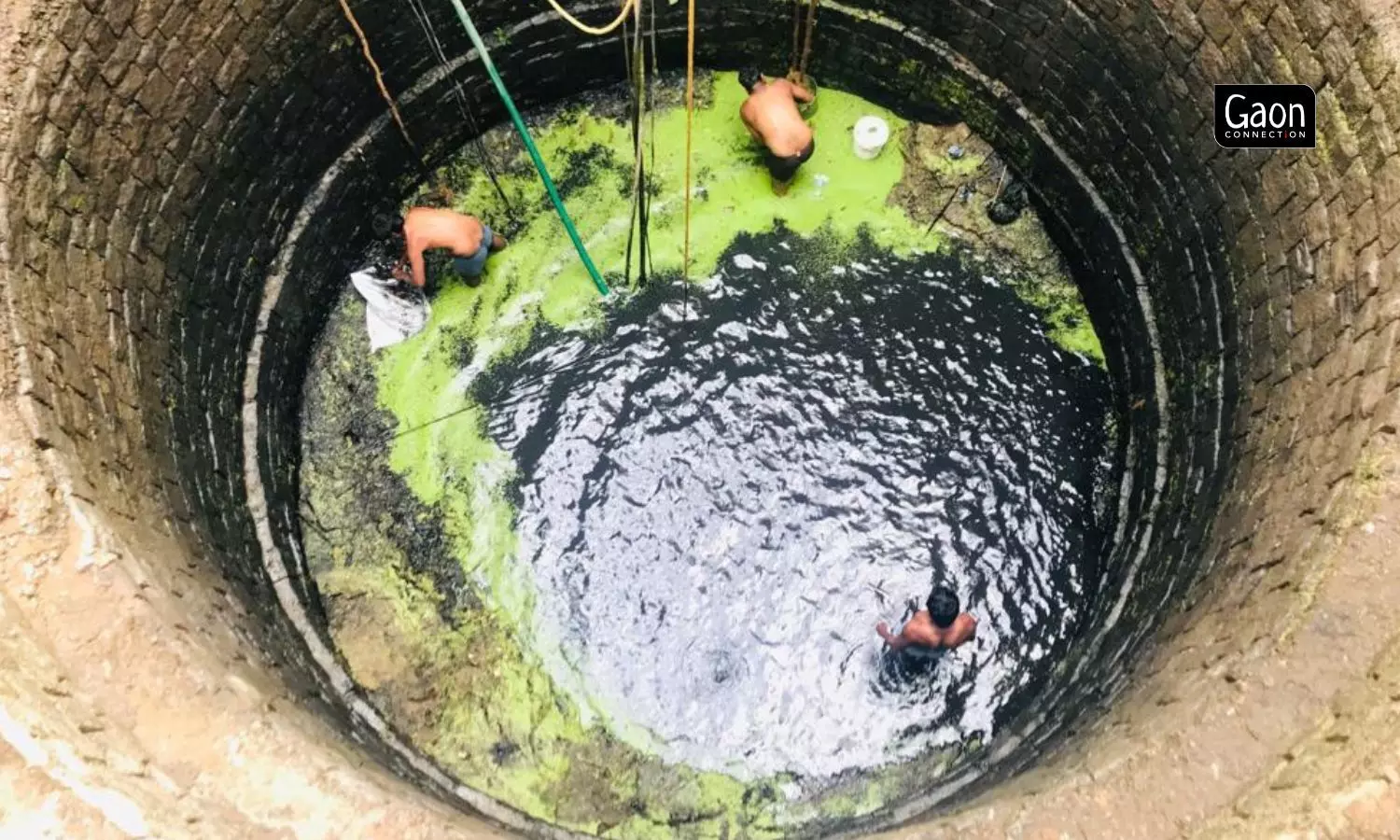
Well-warriors stood inside the 60-feet deep well, in their undergarments, removing silt and waste from the giant well, which once was the sole source of water for the washerman’s community at the dhobi ghat.
Also Read: Dugwells make a comeback in Bihar’s villages
Shankar smiled. So did I. The modern world of borewells and submersible pumps had written off age-old dug wells and their caretakers, the Bhovi community. But, ancient wisdom had its way as we watched how Munikrishna, Srinivas and Pedanna skillfully removed silt and waste from the ancient well and coaxed it back to life.
The exact history of the origins of the Bhovi or Vaddar community is uncertain. Some claim Vaddars came from Odisha (the community is also known as Odra), whereas others believe they are from Andhra Pradesh, as they also speak Telugu. Well-digging communities are also found in Maharashtra and Gujarat.
Vaddars are broadly divided into three sub-groups, as Ramakrishna, a well digger, explained. Mati or mannu vaddar mainly deal with the soil and mud; kallu or dagad vaddar handle stones, whereas ooru vaddars are ragi (finger millet) cultivators, he said.

Vaddars are broadly divided into three sub-groups, out of which the ooru vaddars are ragi (finger millet) cultivators.
I visited Shankar’s home in Bhovipalya village for a wholesome meal of ragi mudde (ragi ball). Apart from helping capture rainwater and reviving dugwells, the Bhovi community also cultivates ragi and consumes it regularly, I learnt. Another climate-friendly practice!
Bengaluru has taken up revival and recharging of dug wells in a big way. The main aim is to augment groundwater levels, which are dipping, and reduce the city’s dependence on river Cauvery that flows nearly 100 kilometres away.
Recharge wells, that collect rainwater from a given area and pump it into the ground, are becoming popular. And, the members of the Bhovi community are helping dig, clean and maintain these wells across the city.
Also Read: When disease and deformity are just a sip away
Despite two monsoons every year— the southwest monsoon (June to September), and the northeast monsoon (October to December) — India struggles for water.
According to an article in Down To Earth magazine, “It rains about 900 mm during a normal monsoon year over India and if we assume that about 80 per cent of India is covered by this rain, then the estimated volume of water is well over 200 lakh crore buckets. It comes to 2 lakh (or 200,000) buckets per person!”
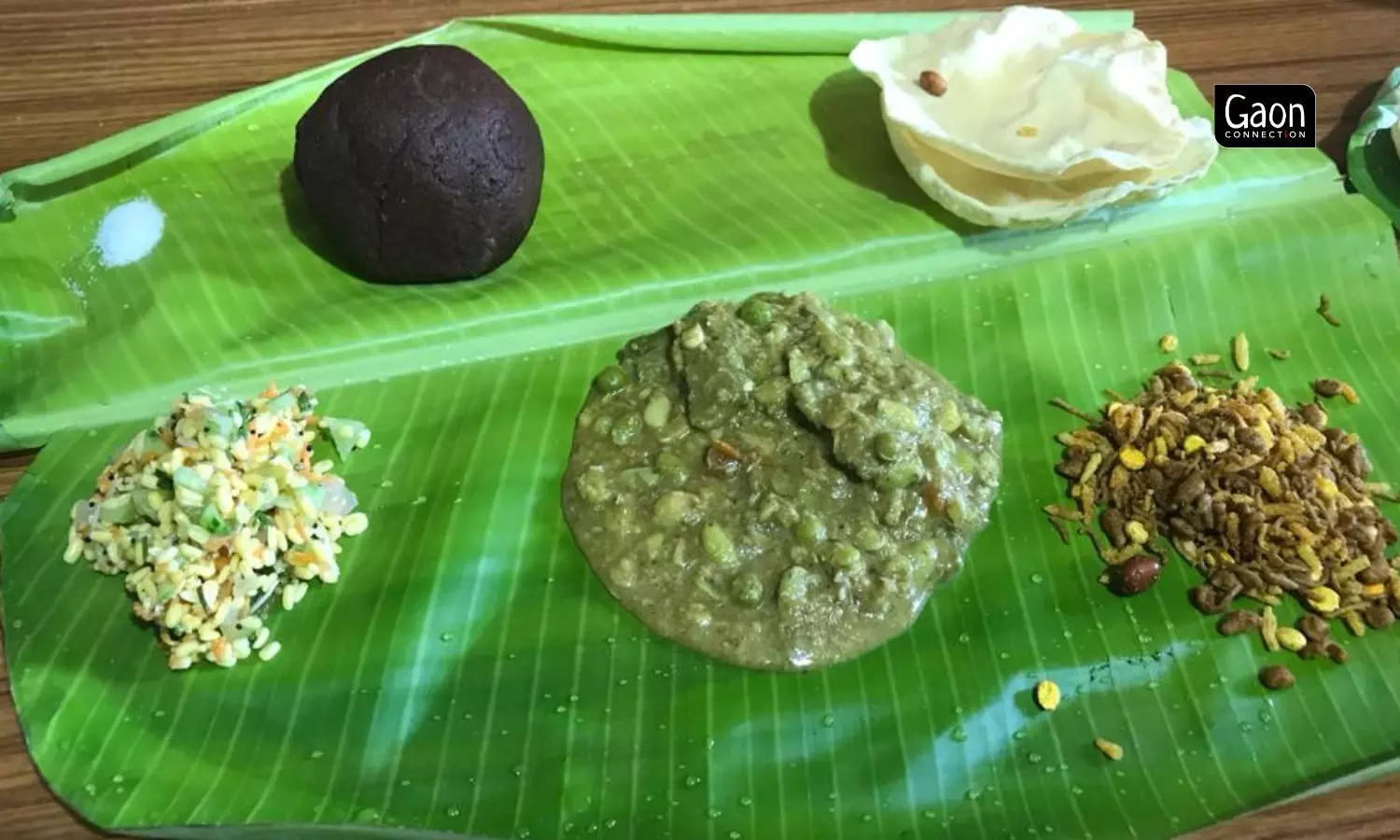
Apart from helping capture rainwater and reviving dugwells, the Bhovi community also cultivates ragi and consumes it regularly.
According to the World Bank, India has 18 per cent of the world’s population, but only four per cent of its water resources, making it amongst the most water-stressed in the world. A June 2018 report by the NITI Aayog points out that India is undergoing the worst water crisis in its history and nearly 600 million people are facing high to extreme water stress. The country is ranked at 120th amongst 122 countries in the water quality index, with nearly 70 per cent of water being contaminated.
Most big cities in India have made rainwater harvesting mandatory. Unfortunately, a lot of it is only on paper, and the climate change that is affecting our monsoon rainfall patterns, is worsening the situation.
But there is hope.
There still exist traditional communities of water managers across the country and are known by different names in different states. They have an ancient bond with water and water-related practices, and it would do well to shine the spotlight on them and their skills.
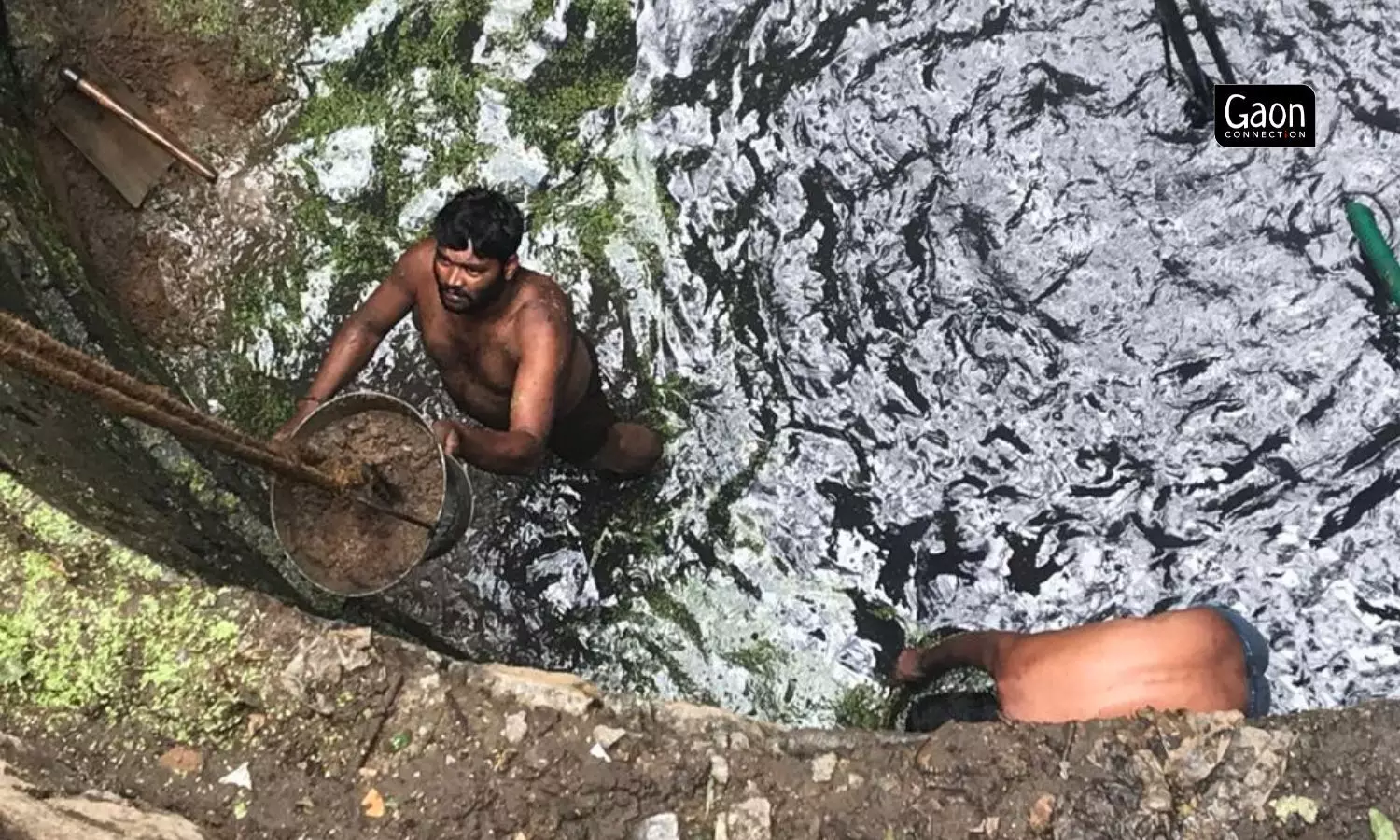
There still exist traditional communities of water managers across the country and are known by different names in different states.
Sadly, they live on the margins of modern life, mostly in oblivion. Their younger generation is dissociated with their centuries-old craft because barely anyone values this ancient wisdom of their ancestors of managing our water and water resources. Our relation with our water is now limited to turning on the tap or pressing the flush handle, or buying bottled water. This must change.
As we rush headlong into the world of artificial intelligence, that is supposed to revolutionise the way we live and function, it is time to pause, step back and take note. Never have we felt a greater need to go back to basics and revive ancient wisdom that has stood the test of time.
The need of the hour is to marry traditional knowledge with modern technology. It does not have to be an either-or situation. They can co-exist. And Shankar, Ramakrishna and the other Bhovi well diggers demonstrated that all too well.












